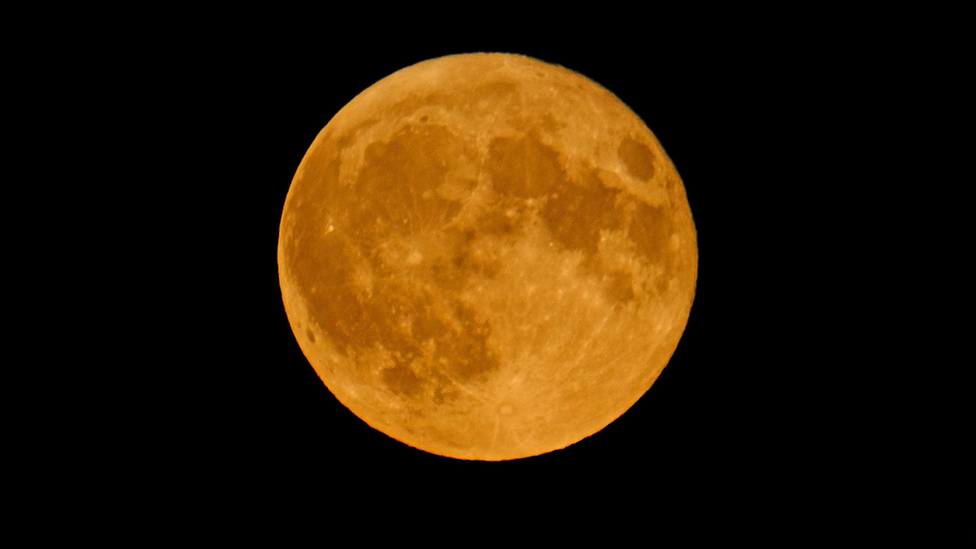Sturgeon Moon: Photographers in England capture full Moon pictures
- Published
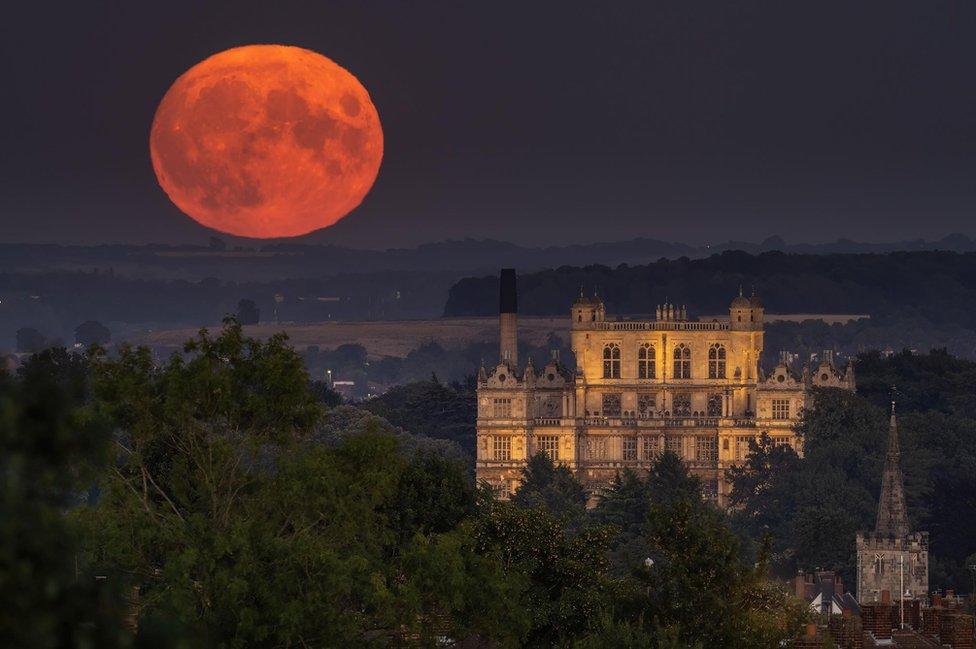
The full Moon was captured rising over Wollaton Hall, once used as a location in a Batman movie
Skies were lit up across the country as the bright Sturgeon Moon rose on Thursday night.
Clear August skies meant the glowing full Moon was captured in all its glory, making for some spectacular shots.
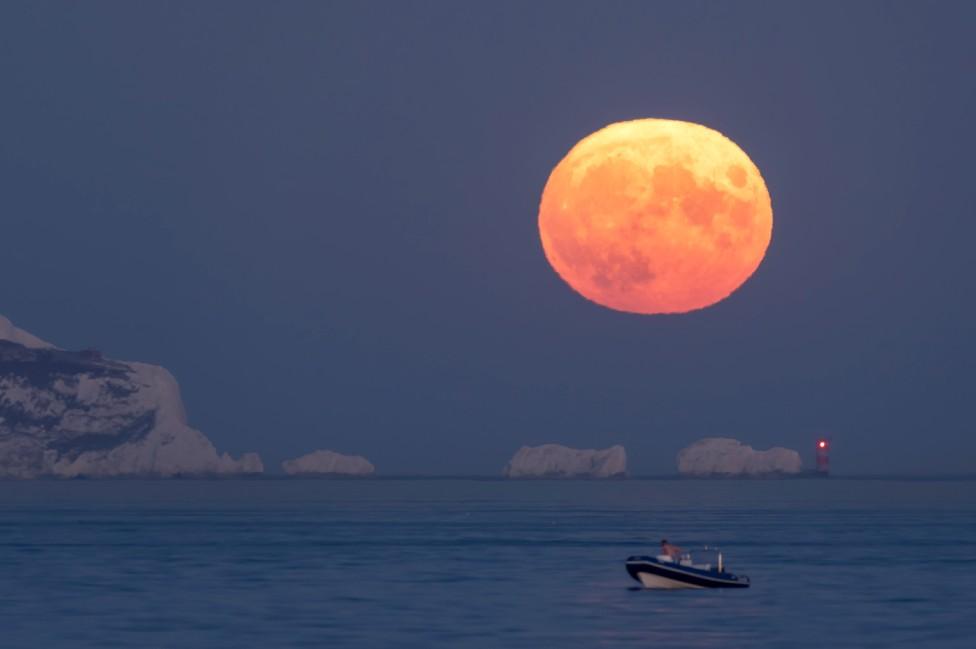
A beautiful shot over the Needles on the Isle of Wight
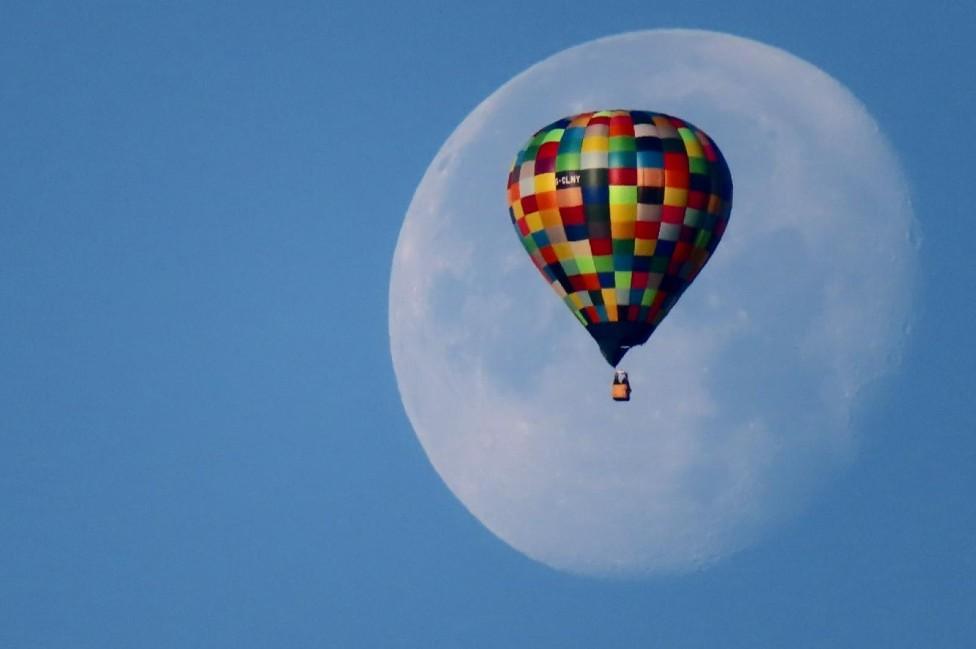
The Sturgeon Moon was visible in the blue sky above Heworth, in North Yorkshire
The National Space Centre said it did not consider the Sturgeon Moon to be close enough to the Earth to be called a "supermoon".
Although there is no official definition, it said supermoons must be closer than 360,000km, but last night's, which peaked at 02:36 BST, was 361,408km away.
Much closer than the average Earth-Moon distance, but not quite close enough.
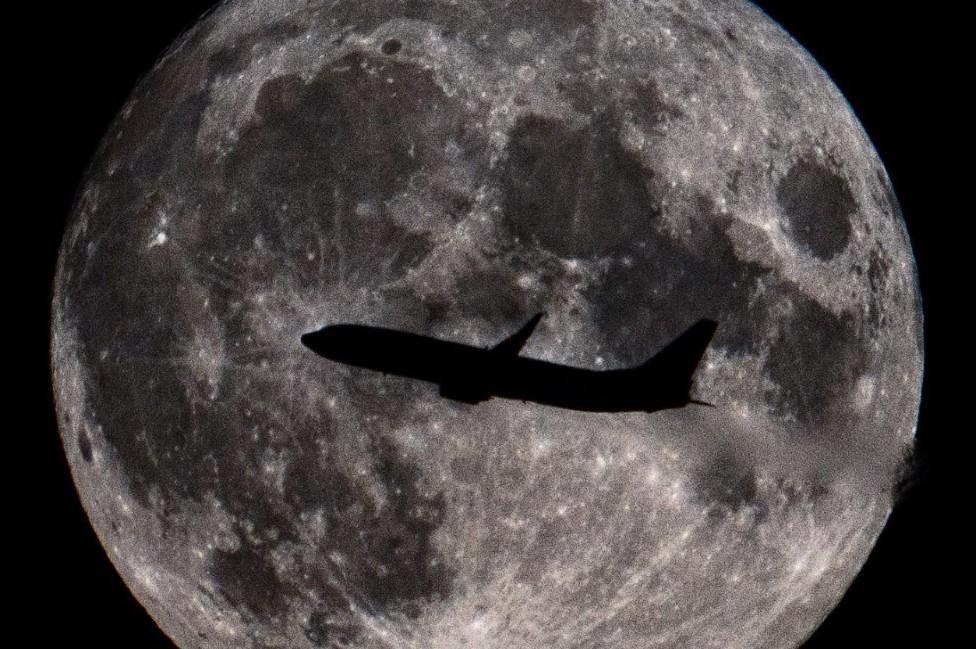
An aeroplane in Birmingham got a closer look at the Sturgeon Moon

The Sturgeon Moon seen from Beacon Hill, Leicestershire
However, Dhara Patel, an expert at the National Space Centre, said not everyone would agree.
She said: "Different groups have come up with different rules surrounding what constitutes a supermoon.
"In one broad sense, the Moon is considered to be a supermoon if the Moon is within 90% of its closest distance at the exact moment of full Moon.
"In another sense, some use the definition that when the Moon is within 360,000km of the Earth at the time of full Moon or new Moon.
"In the strictest sense, a supermoon is the single closest new Moon and full Moon of the year, so by that definition there can only be two a year."
The National Space Centre compared the debate to another about whether private trips to space, like ones taken by billionaires Jeff Bezos and Richard Branson, make them astronauts or space tourists.
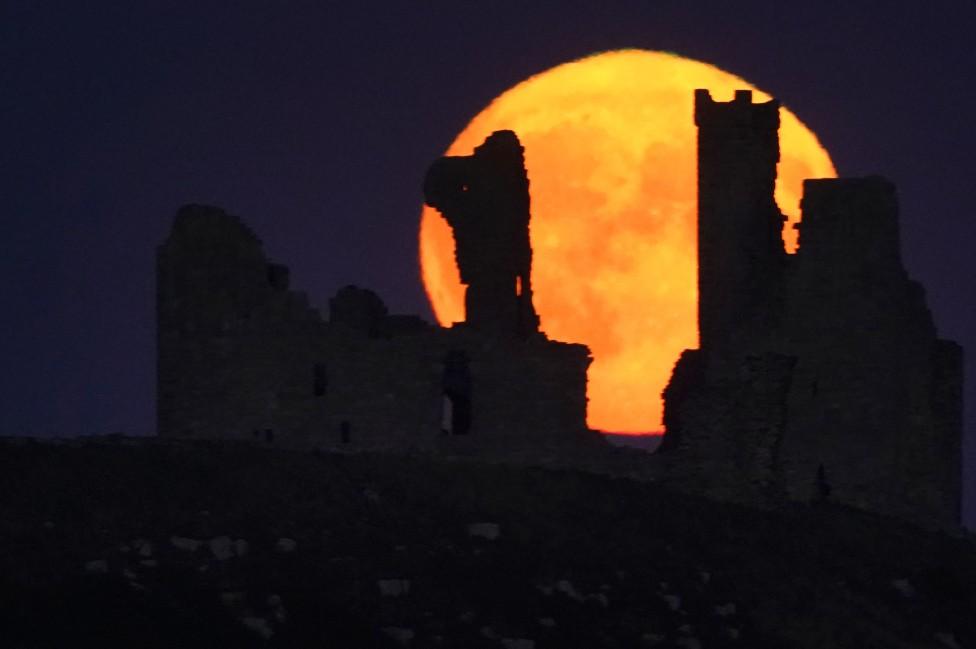
The Moon was seen glowing behind Dunstanburgh Castle in Northumberland
Full Moons occur every 29.5 days when the Moon is directly opposite to the Sun.
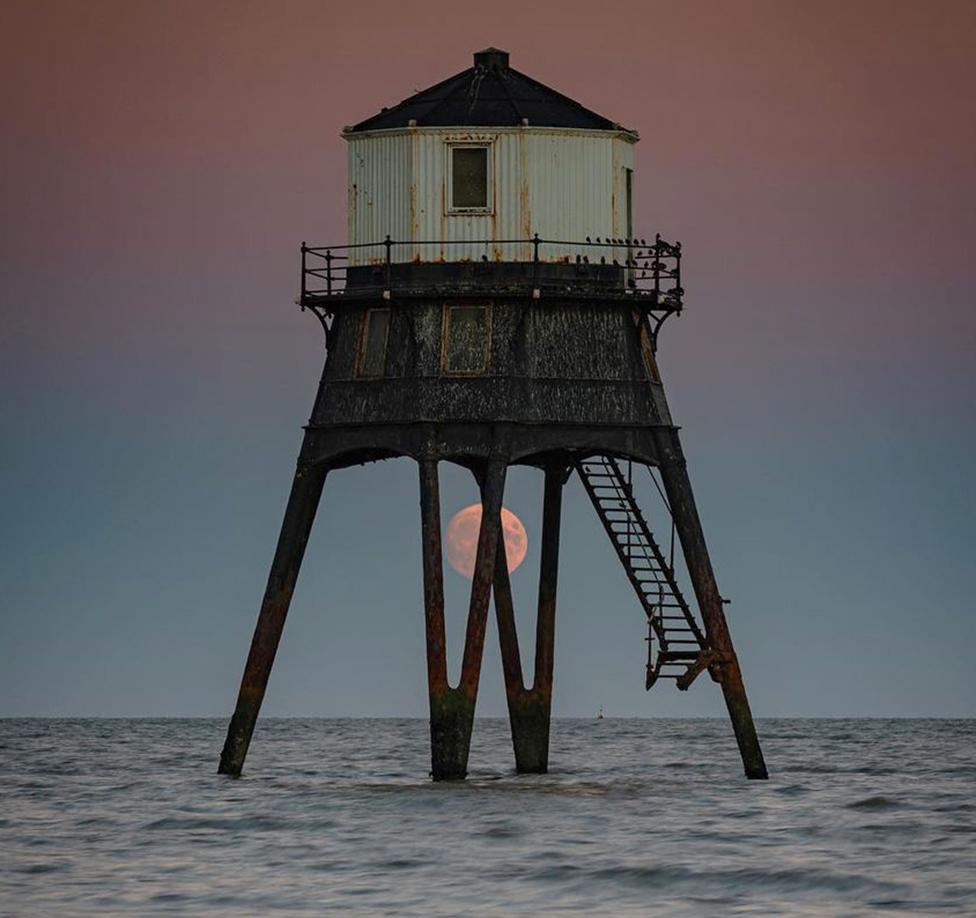
The Moon peaking behind Dovercourt Lighthouse in Essex

The Sturgeon Moon over Selsey, West Sussex
The full Moon in August was named the Sturgeon Moon by Native American fishing tribes, due to there being an abundance of the fish at that time of year.
The Royal Museums Greenwich said it had also been called the green corn Moon, the grain Moon, and the red Moon, due to the reddish appearance it often has.
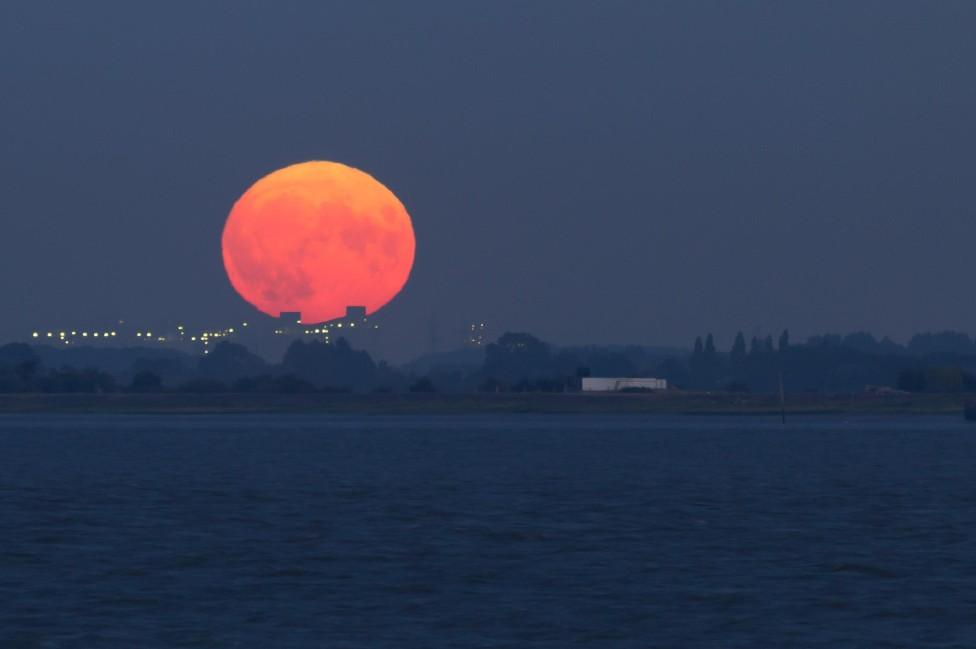
Behind the lights of Hull, East Yorkshire
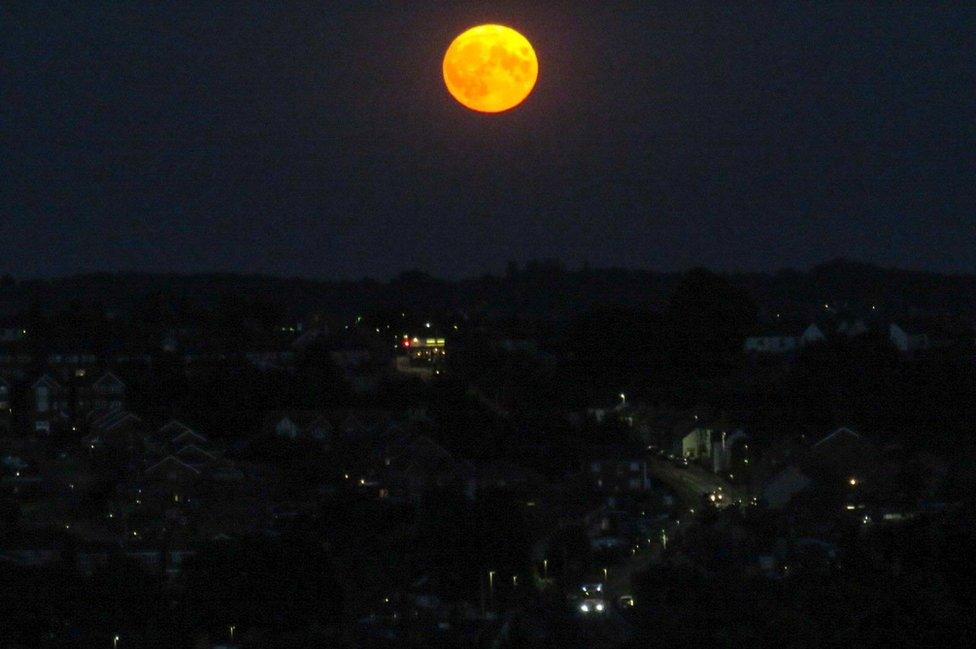
Lighting up the sky above Belper, Derbyshire
The next full Moon will be on 10 September and called the Harvest Moon after the time farmers would start to gather crops.

Follow BBC East Midlands on Facebook, external, on Twitter, external, or on Instagram, external. Send your story ideas to eastmidsnews@bbc.co.uk, external.
- Published12 August 2022
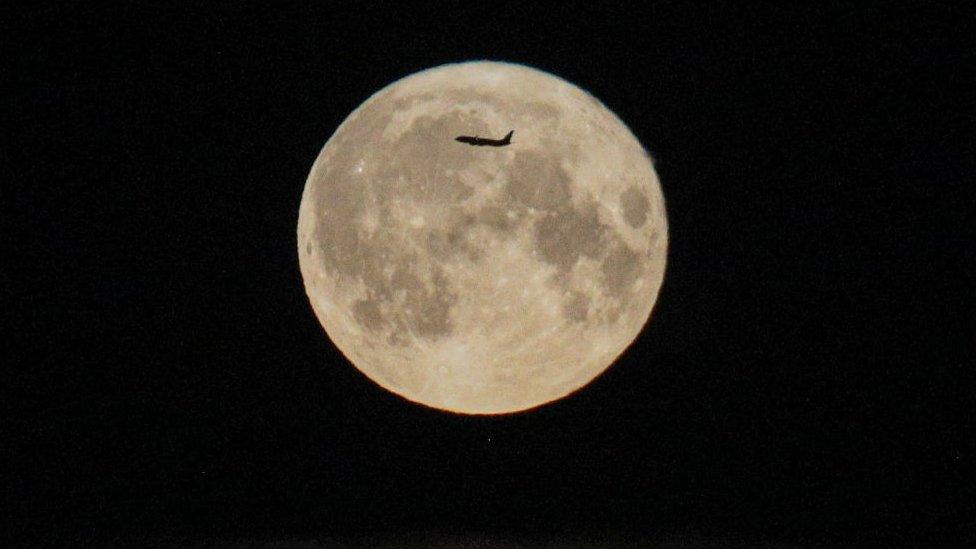
- Published11 August 2022

- Published13 July 2022

- Published15 June 2022
